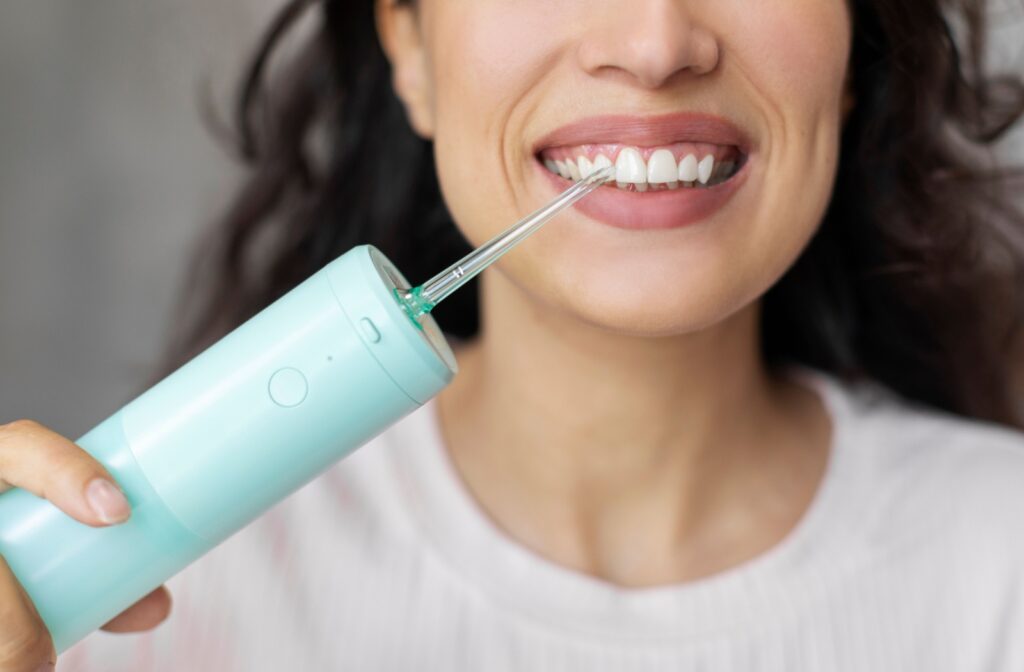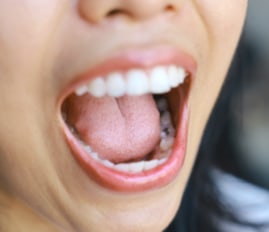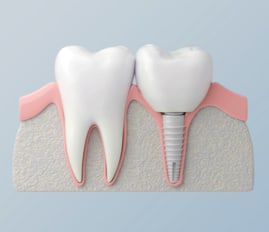If your gums bleed when you floss, you’re not alone. It’s common, especially when starting a new oral hygiene routine, and often signals gingivitis, an early stage of gum disease. Plaque buildup at the gumline irritates tissues, making them prone to bleeding.
Bleeding isn’t just a localized issue; it highlights the interconnectedness of your health, which is central to holistic dental care. Instead of just treating the symptom, holistic dentistry addresses the root cause of dental problems for long-term wellness. It combines modern dental science with a holistic approach, recognizing that your oral health is closely linked to your overall well-being.
Is It Normal for Gums to Bleed When You Floss?
A small amount of bleeding when you start flossing can be normal, especially if it’s a new habit or you’ve been inconsistent with it. The gums may be inflamed due to plaque and bacteria build-up, which causes them to react when disturbed by floss. In most cases, this initial bleeding should resolve within 1 to 2 weeks with consistent, gentle flossing.
However, if bleeding persists, it could indicate an underlying issue that requires attention. Rather than simply addressing symptoms, a holistic dental approach looks deeper to understand the body’s biological responses and support lasting health.
Common Causes of Bleeding Gums
1. Gum Disease
Gum disease often begins as gingivitis, a mild form of inflammation caused by plaque buildup at the gumline. Left untreated, it can progress to periodontitis, a more serious condition that affects the tissue and bone supporting your teeth.
A holistic approach to gum health can include bacteria testing to determine which bacterial strains are present in your mouth. This helps create a personalized treatment plan that addresses the specific root causes of inflammation.
Laser-assisted gum therapy provides a noninvasive and targeted approach to treating gum disease by eliminating harmful bacteria and promoting the body’s natural healing process. Compared to traditional deep cleanings, this method is gentle and precise. It helps preserve healthy tissue, making it a practical option for those seeking a less invasive approach to maintaining gum health.
2. Hormonal Changes
Hormonal fluctuations can make your gums more sensitive and reactive. This is especially common during pregnancy, menstruation, or menopause. If your gums bleed more than usual during these times, it doesn’t necessarily mean there is a serious problem, but it does mean your mouth may simply need a little extra support.
3. Vitamin Deficiencies
Nutritional imbalances, particularly low levels of vitamin C or vitamin K, can contribute to bleeding gums. Vitamin C supports tissue repair and immune function, while vitamin K plays a key role in blood clotting.
A holistic approach to dentistry considers how nutrition, lifestyle, and overall well-being can influence oral health. By addressing the connection between the mouth and the rest of the body, holistic care supports long-term wellness and may include guidance on nutrition to promote healthier outcomes.
Why Flossing Is Essential
Flossing plays a vital role in maintaining oral hygiene and whole-body health. Your toothbrush can’t reach the tight spaces between your teeth or just beneath the gum line, which are places that bacteria like to hide. Flossing removes debris and helps prevent:
- Cavities in hard-to-reach areas
- Gum disease and tissue damage
- Bad breath caused by bacterial accumulation
Chronic inflammation in the mouth has been linked to systemic conditions, including cardiovascular disease, diabetes, and respiratory illnesses.
Holistic dentistry recognizes the strong connection between oral health and overall wellness. Maintaining healthy gums isn’t just about protecting your smile; it also supports the health of your entire body.
How to Floss Properly
Proper technique helps you get the most from flossing while minimizing irritation.
Here’s how to floss effectively:
- Use enough floss: Cut about 18 inches of floss and wrap it around your middle fingers, leaving about two inches to work with.
- Be gentle: Gently slide the floss between your teeth, avoiding any snapping that could injure your gums.
- Form a c-shape: Curve the floss around each tooth and glide it under the gumline. Move it up and down gently to remove debris.
- Use a clean section: Switch to a fresh piece of floss between each tooth to prevent transferring bacteria.
- Don’t forget the back teeth: Plaque tends to collect behind your molars, so make sure to give those areas attention.
For personalized guidance, ask your dentist about the proper flossing technique during your next appointment; they can help you build a routine that supports long-term gum health.
Alternatives to Traditional Flossing

If you find string floss difficult to use or uncomfortable, there are effective alternatives:
- Water flossers: These devices use a stream of water to clean between teeth and along the gumline. They are ideal for patients with braces, implants, or sensitivity.
- Interdental brushes: Small, tapered brushes that fit between teeth. These are especially helpful for people with larger gaps or dental work.
- Floss picks: Pre-threaded tools can be easier to manoeuvre, especially for children or people who find string flossing challenging.
Because every patient is unique, it’s essential to find a flossing method that suits your unique needs and lifestyle. Your dentist can help guide you toward the best approach.
When Should You See a Dentist?
If your gums are still bleeding after two weeks of consistent flossing, it may be time to book an appointment with your dentist for a closer evaluation.
Persistent bleeding may be a sign of:
- Gum disease requiring professional care
- A systemic issue that affects oral tissue health
- An imbalance in your oral microbiome that needs addressing
A dentist may recommend bacteria testing to gain clearer insight into what’s happening beneath the gumline. This insight can help guide a personalized treatment plan, which may include options like laser-assisted gum therapy or adjustments to diet, lifestyle, or daily oral care routines.
A Holistic Approach to Gum Health at Health First Dental
At Health First Dental, we believe your gums are a reflection of your overall wellness. Bleeding is not something to ignore, it’s a signal that your body needs support. By combining science-backed tools with a patient-centred philosophy, we can help you get to the root of the issue and support your long-term health.
If you’re noticing bleeding while flossing, know that you’re not alone and that help is available. Let’s work together to restore balance, health, and comfort to your smile.
Book your visit with Health First Dental today and take the first step toward healthier gums and a healthier you.












